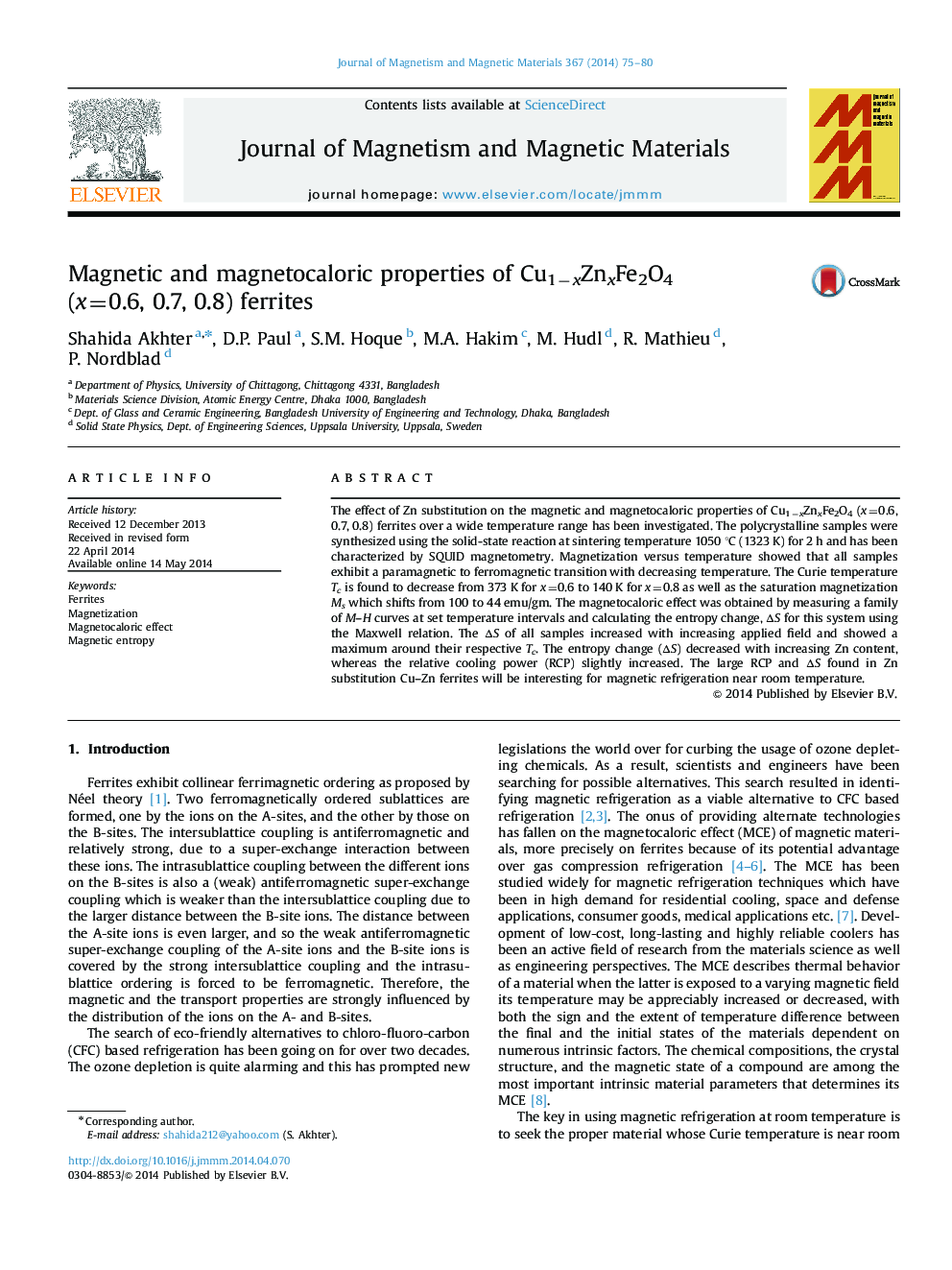| Article ID | Journal | Published Year | Pages | File Type |
|---|---|---|---|---|
| 1799502 | Journal of Magnetism and Magnetic Materials | 2014 | 6 Pages |
•Double sintering ceramic technique is used in preparation of samples.•SQUID magnetometry is used to measure magnetic and magnetocaloric properties.•Samples shows a paramagnetic to ferromagnetic transition with decreasing temperature.•The magnetic entropy change (ΔS) shows a maximum around their respective Tc.
The effect of Zn substitution on the magnetic and magnetocaloric properties of Cu1−xZnxFe2O4 (x=0.6, 0.7, 0.8) ferrites over a wide temperature range has been investigated. The polycrystalline samples were synthesized using the solid-state reaction at sintering temperature 1050 °C (1323 K) for 2 h and has been characterized by SQUID magnetometry. Magnetization versus temperature showed that all samples exhibit a paramagnetic to ferromagnetic transition with decreasing temperature. The Curie temperature Tc is found to decrease from 373 K for x=0.6 to 140 K for x=0.8 as well as the saturation magnetization Ms which shifts from 100 to 44 emu/gm. The magnetocaloric effect was obtained by measuring a family of M–H curves at set temperature intervals and calculating the entropy change, ΔS for this system using the Maxwell relation. The ΔS of all samples increased with increasing applied field and showed a maximum around their respective Tc. The entropy change (ΔS) decreased with increasing Zn content, whereas the relative cooling power (RCP) slightly increased. The large RCP and ΔS found in Zn substitution Cu–Zn ferrites will be interesting for magnetic refrigeration near room temperature.
